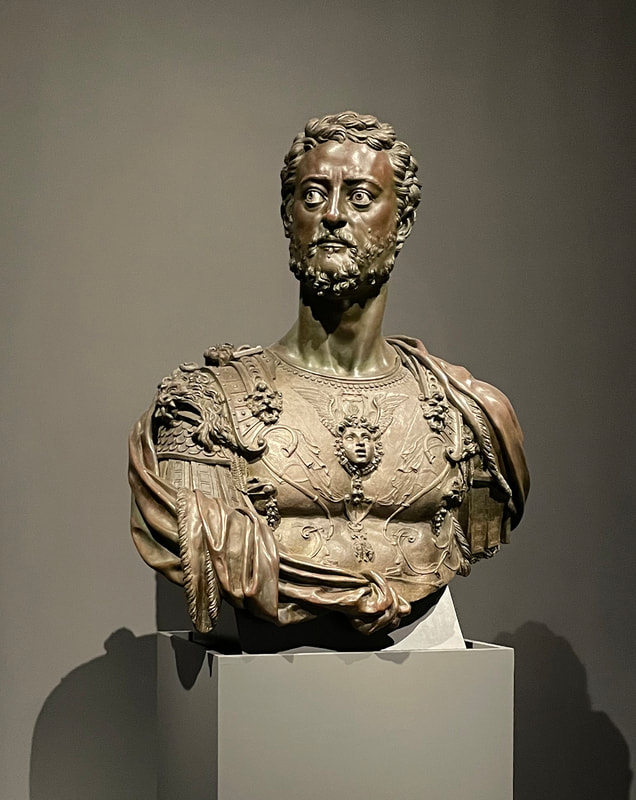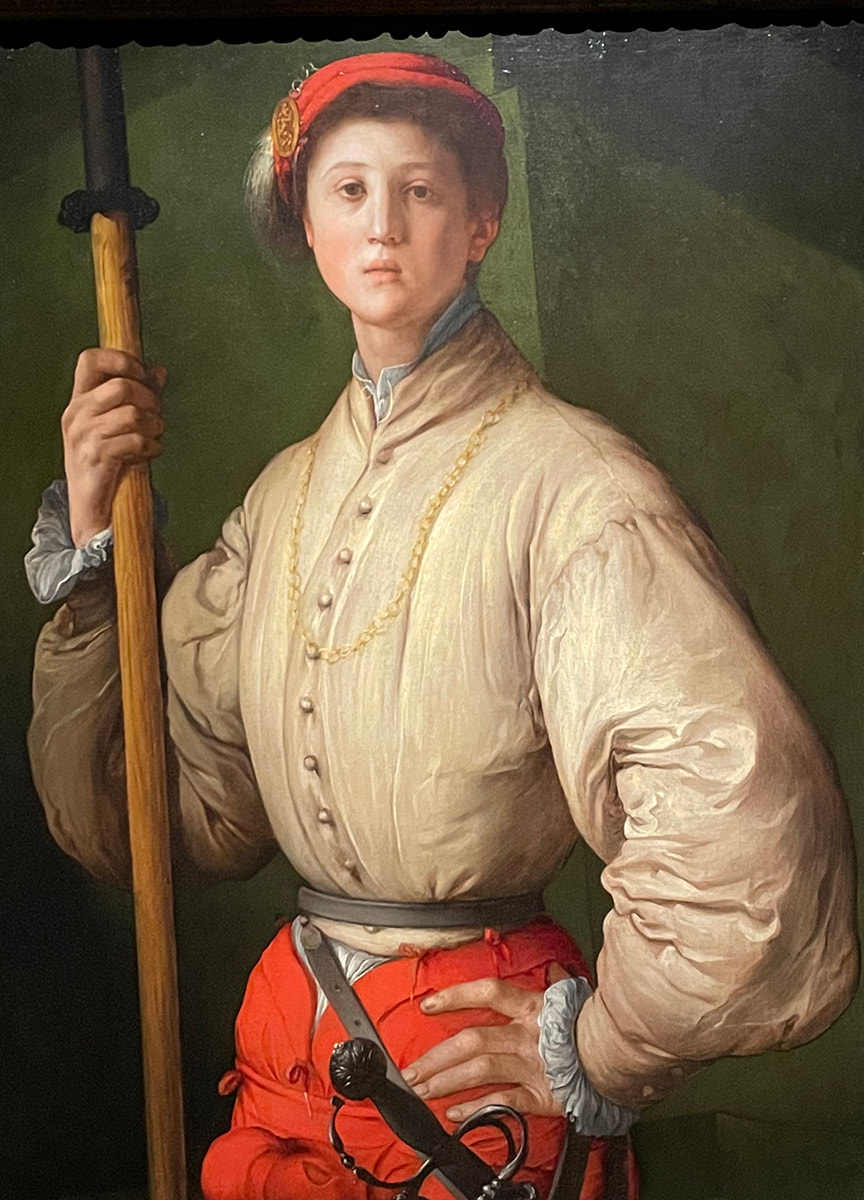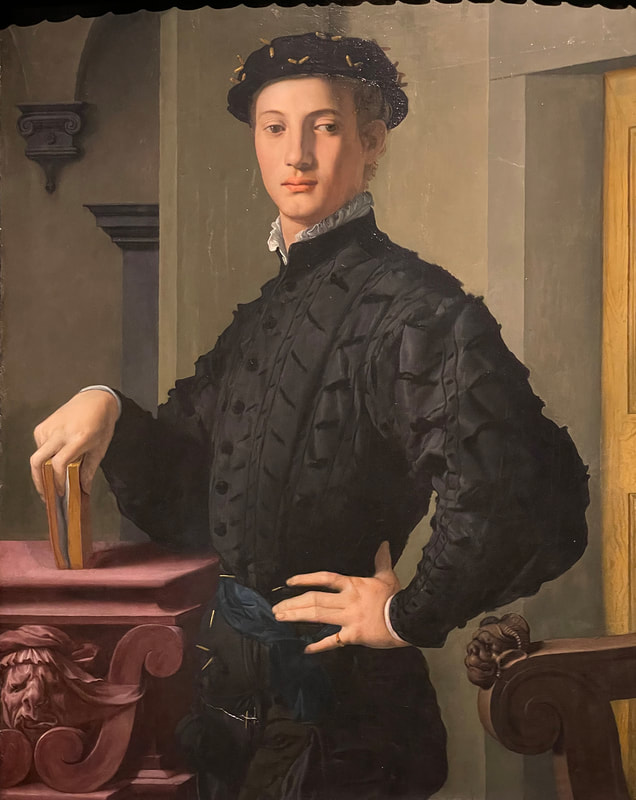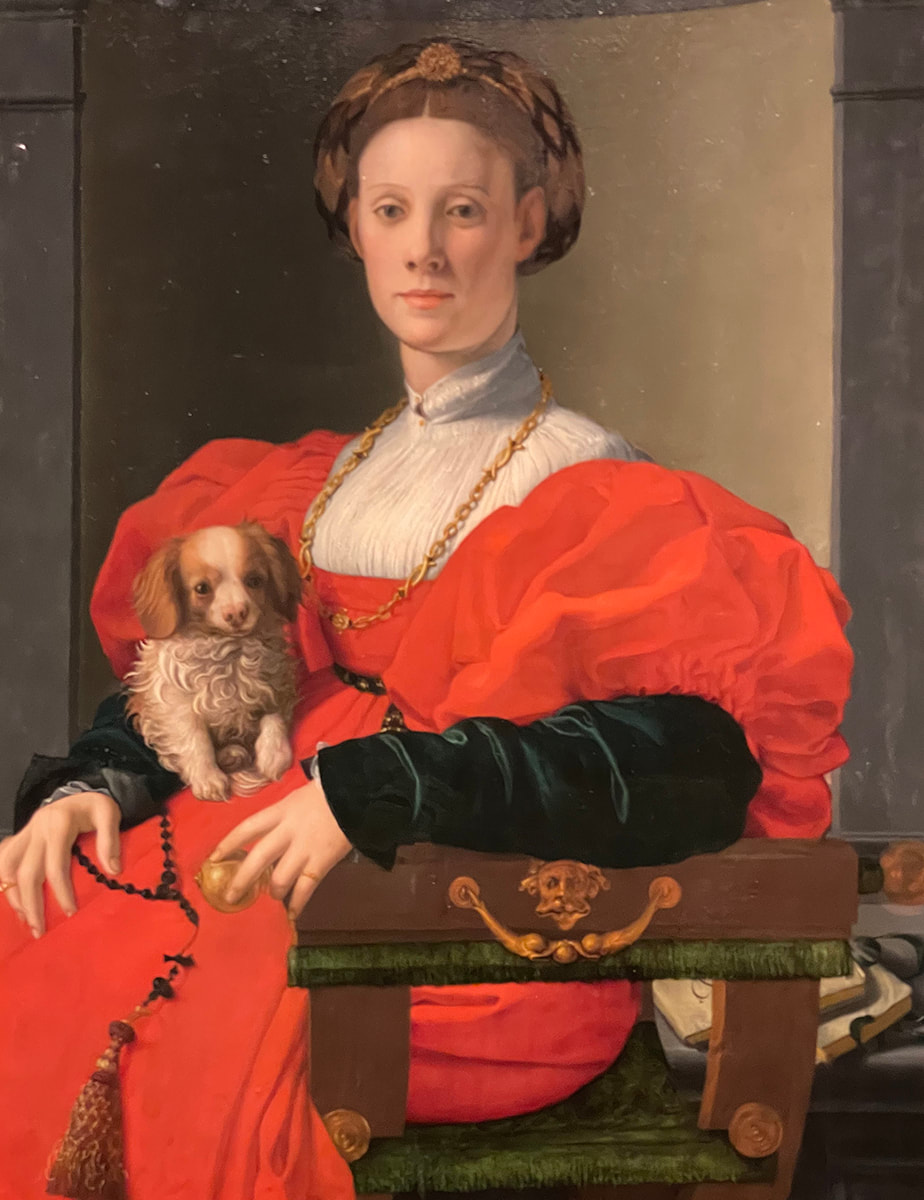"The Medici: Portraits & Politics" “The Medici: Portraits and Politics, 1512–1570” at the Metropolitan Museum of Art presents 90 works of art drawn from not only from the Met's own collection but also from other museums and private collections. The exhibition undertakes to place an array of Renaissance portraits done by a number of different artists into their historical context.
Until 1512, Florence was an independent republic with elected officials. In that year, Cardinal Giovanni de’ Medici, later Pope Leo X entered the city and the republic fell. For the next 15 years, the powerful Medici family, who had ruled Florence earlier, dominated Florentine politics. In 1527, the Florentines attempted unsuccessfully to create a new republic but were defeated by Spanish troops sent by the Holy Roman Emperor, who was in league with the Medicean Pope. A duchy was created with Alessandro de’ Medici as the ruler in 1532. However, Duke Alessandro did not last long; being assassinated in 1537. He was replaced on the ducal throne by Cosimo I de’ Medici, a young member of an obscure branch of the family. Not wishing to share his predecessor's fate, Cosimo set about consolidating his power. One of the ways that he did this was by enlisting the arts in his service. Florence had a long established artistic tradition - - it was the home of Michelangelo - - and Cosimo wanted to build upon this tradition to have his state be seen as a center of culture - - a much-desired status in those days. In addition to fine art, Cosimo called upon poetry, literature and architecture to support his rule. Culture became a means to promote the court, its aesthetics, and its literary and political ideals. History is full of examples of states using art to bolster their message. In recent times, both the Soviets and the Nazis manufactured art for use in their propaganda efforts. Most of the time, such state-driven efforts result in bad art. However, as in the case of Jacques Louis David whose art supported first the radicals of the French Terror and later the Napoleonic Empire, some great works can result. In the case of Florence, it was a mixed bag. Benvenuto Cellini's larger than life size bronze bust of Cosimo in Roman armor is a powerful work. Most of the portrait paintings by contrast are technically proficient but rather lifeless. During this period, portraiture was not so much about capturing the sitter's essence but rather about projecting the place that the sitter desired others to see him or her as holding in the social hierarchy. For example, since culture was highly thought of, sitters were often depicted with books to indicate their intellectual interest. The details of their often elaborate clothing, which communicated their wealth and power, were more important than revealing their personality. Sometimes the effort to foster a specific image produced a rather silly result. For example, in Agnolo Bronzino's portrait of Cosimo as the mythological Orpheus, a fit, young naked man is seen interrupted while playing the lyre. The objective was to show both Cosimo's sex appeal as well as his affinity for music and culture. Leaving aside the fact that Cosimo's face was obviously painted onto someone else's body, the absurdity of the overall image can be demonstrated by thinking of how any modern politician would look in such a pose. The exhibition also includes portraits by Bronzino of Cosimo in contemporary armor and in civilian dress. These are quite competent portraits. However, they fall short of Anthony Van Dyke's portraits promoting the image of King Charles I. This is not to say that there were no masterpieces created during this period. Jacopo da Pontormo's “Portrait of a Halberdier” is a major work of the Renaissance. While its subject is not entirely free from doubt, it is believed to be a portrait of a young defender of the Republic rather than a member of the Medicean court. Also in the exhibition is Rapahels' portrait of Lorenzo de’ Medic and Titian's portrait of the literary figure Benedetto Varchi. The exhibition includes books, weapons, clothing, and medalians as well as paintings and sculpture. Sixteenth century Florentine politics is a topic unfamiliar to most but the Met's telling of the story in such an integrated fashion makes the story interesting and easily comprehensible. |
Above: Cellini's massive bust of Duke Cosimo greets visitors to the exhibition.
Below: "Portrait of a Halberdier" by Pontormo. Agnolo Bronzino was a favorite of Duke Cosimo. As a result, he painted portraits of many members of Cozimo's court. While the identities of the man (above) and the woman (below) are now lost, their images continue on.
|
Art review - Metropolitan Museum of Art - "Medici Portraits"



